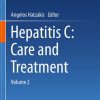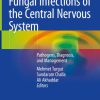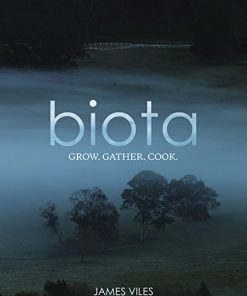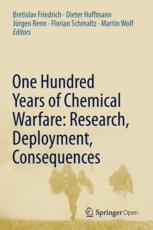American Trypanosomiasis Chagas Disease Second Edition One Hundred Years of Research 1st edition by Jenny Telleria,Michel Tibayrenc PhD 9780128010297 0128010290
$50.00 Original price was: $50.00.$25.00Current price is: $25.00.
American Trypanosomiasis Chagas Disease Second Edition One Hundred Years of Research 1st edition by Jenny Telleria,Michel Tibayrenc PhD – Ebook PDF Instant Download/Delivery:9780128010297,0128010290
Full download American Trypanosomiasis Chagas Disease Second Edition One Hundred Years of Research 1st edition after payment
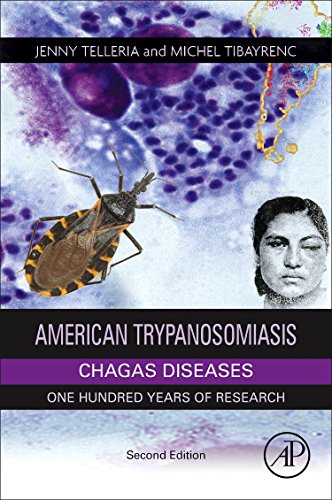
Product details:
ISBN 10:0128010290
ISBN 13:9780128010297
Author:Jenny Telleria,Michel Tibayrenc PhD
American Trypanosomiasis, Chagas Disease: One Hundred Years of Research, Second Edition, provides a comprehensive overview of Chagas disease and discusses the latest discoveries concerning the three elements that compose the transmission chain of the disease, the host, the insect vectors, and the causative parasite.
In addition, new insights on the molecular biology and diagnostics of Chagas diseases, the persistence of infections in the host, and the interaction of the parasite and host metabolism are now included in this new and updated edition.
- Provides a thoroughly revised, updated, and streamlined new edition with contributions from leading authorities and industry experts
- Informs and updates on all the latest developments of Chagas disease, covering biology, clinical aspects, and human sciences
- Includes a summarizing chapter that provides key insights of practical significance for prevention efforts
American Trypanosomiasis Chagas Disease Second Edition One Hundred Years of Research 1st Table of contents:
1. History of the discovery of the American Trypanosomiasis (Chagas disease)
Abstract
A beautiful history of life and work
The history of a significant discovery
Salvador Mazza: marked the history of the knowledge of his disease
Cecilio Romanha: his contribution to the identification of the disease
First evidence of Trypanosomiasis Americana (Chagas disease) in various countries of Latin America
Chagas disease 100 years after the discovery
Acknowledgments
References
2. Chagas disease in pre-Colombian civilizations
Abstract
Introduction
Genetic variation
Archeology
Biochemistry (Bioarcheology)
The parasite transmission cycle
Insect vectors associated with the human habitats
Historical overview
Pre-Hispanic settlements in areas of transmission of T. cruzi
Oral infection by T. cruzi
Evidence of human T. cruzi infection in pre-Colombian civilizations
References
3. Social and medical aspects on Chagas disease management and control
Abstract
Introduction
General frame and costs of HCD
The medical burden of HCD in endemic and nonendemic areas
The particular question of specific treatment of Chagas disease
Some social remarks concerning the control of HCD
Final remarks
Abbreviations
References
4. Current epidemiological trends of Chagas disease in Latin America and future challenges: epidemiology, surveillance, and health policies
Abstract
Introduction
Modes of transmission
Methods and measurement of epidemiological trends in the continent from 1980 to 2006
Feasibility of interruption of transmission
Current control programs
Economic impact
Epidemiological impact in the region
Epidemiological impact
Future challenges
References
5. Geographical distribution of Chagas disease
Abstract
Introduction
Vector phylogeography and ecology
Parasite phylogeography and ecology
Epidemiological implications of parasite distributions
Vector–parasite–host interactions and implications for Chagas disease distribution
Assessment of regions affected by Chagas disease
Oceania and Asia
Chagas disease in Mexico and Central America
Chagas disease in the Amazon region
Chagas disease in the Andean region
Chagas disease in the Southern Cone countries
References
6. Classification and systematics of the Triatominae
Abstract
Introduction
Subfamily: Triatominae
Tribes and genera
Concept of species
Conclusions
A consensual approach to the species
Acknowledgment
References
7. Biology of Triatominae
Abstract
Introduction
General biology of vectors
Insight into the biology and ecology of Triatominae in the silvatic environment
Vectorial capacity and domesticity
Vector control strategy
Acknowledgments
Glossary
References
8. Population genetics of Triatominae
Abstract
Introduction
Vector population structure directs Chagas disease epidemiology and control
Genetic variation, population structure, and implications for vector control
Genetic variation and population structure of T. infestans, T. dimidiata, R. prolixus and other significant vectors of human Chagas disease
Perspective and future directions
Acknowledgments
References
9. Geographic distribution of Triatominae vectors in America
Abstract
Introduction
Limitation of sampling methods to estimate the geographic distribution of Triatominae
Pattern of species richness in the New World Triatominae
Distribution of Triatominae in the Americas
Environmental variables as indicators of Triatominae geographic distribution
Global warming and expansion of geographic range of T. infestans
Glossary
References
10. Control strategies against Triatominae
Abstract
Introduction
Elimination of domestic populations of Triatominae
Multinational initiatives
The beginning of the end?
Criteria for stratification of vector control priorities
Insecticide resistance
New technologies for vector control
The political commitment
Acknowledgments
References
11. Ecological aspects of Trypanosoma cruzi: Wild hosts and reservoirs
Abstract
Introduction
Order Didelphimorphia
Superorder Xenarthra
Order Rodentia
Order Primata
Order Carnivora
Order Chiroptera
Order Artiodactyla
References
12. Trypanosoma cruzi enzootic cycle: General aspects, domestic and synanthropic hosts and reservoirs
Abstract
The complex Trypanosoma cruzi transmission cycle
What are the Trypanosoma cruzi reservoirs?
Importance of wild and synanthropic mammals in public health—Brazil
Domestic mammalian species
Domestic nonmammalian species
Importance of infected domestic mammals on public health in Brazil
Mixed infection
References
13. Veterinary aspects
Abstract
Introduction
The various ways of infection of animals (and humans)
The problem of diagnosis in animals
Natural infections in domestic animals and livestock
Experimental infections in livestock
New cycles establish in the United States
Conclusions
References
14. Experimental studies of Chagas disease in animal models
Abstract
Introduction
Animal species used as experimental model in Chagas disease
Conclusions
References
15. Classification and phylogeny of Trypanosoma cruzi
Abstract
Application of molecular phylogenetics to trypanosome taxonomy and understanding evolution
Origin of trypanosomes and the relationship between T. cruzi and T. brucei
Relationships within the genus Trypanosoma
Molecular phylogenetics and traditional taxonomy of mammalian trypanosomes
The main groups of trypanosomes recognized in molecular phylogenetic analyses
The T. cruzi clade
The origin of the T. cruzi clade
Outlook
Glossary
References
16. Biology of Trypanosoma cruzi and biological diversity
Abstract
Taxonomy
Introduction
Evolutionary stages
Biological cycle
Biology in the vertebrate host
Biology in the invertebrate host
Biological diversity of T. cruzi
Maintaining T. cruzi in the laboratory
Glossary
References
17. Biochemistry of Trypanosoma cruzi
Abstract
Introduction
Chemotherapy of Chagas disease
Metabolic pathways in T. cruzi that could provide targets for drugs against Chagas disease
Redox metabolism
Acidocalcisome biochemistry and osmoregulation
Conclusion
Acknowledgments
References
18. Ultrastructure of Trypanosoma cruzi and its interaction with host cells
Abstract
Structural organization of Trypanosoma cruzi
The nucleus
The kinetoplast–mitochondrion complex
The glycosome
The acidocalcisome
The contractile vacuole
The cytoskeleton
The flagellum
The flagellar pocket
The secretory pathway
The endocytic pathway
Other cytoplasmic structures
Acknowledgments
References
19. Genetics of Trypanosoma cruzi
Abstract
Nuclear genome
Sequencing of the CL Brener reference strain—a historical perspective
Sequencing strategy, genome organization, and content
Comparative genome sequencing and analyses
Transcription mechanisms and genetic expression in T. cruzi
References
Kinetoplast genome
Introduction
kDNA organization
Replication model of kDNA
Maxicircles and minicircles: kDNA coding
Determination of T. cruzi lineages analyzing minicircles DNA sequences
References
20. Experimental and natural recombination in Trypanosoma cruzi
Abstract
Introduction
Genetic diversity of T. cruzi
Experimental recombination
Recombination in natural populations
Conclusions and future research
Acknowledgments
References
21. Trypanosoma cruzi and the model of predominant clonal evolution
Abstract
Introduction
An indispensable recall of evolutionary genetics
The results: how does T. cruzi evolve?
Conclusion: Trypanosoma cruzi should be a star in the field of pathogen population genetics
Glossary of specialized terms
Acknowledgment
References
22. Vector transmission: How it works, what transmits, where it occurs
Abstract
How does transmission work?
Who transmits the parasite?
Where does the transmission occur?
The perception of vectors and a need for education
References
23. Maternal–fetal transmission of Trypanosoma cruzi
Abstract
From maternal–fetal transmission of Trypanosoma cruzi to congenital Chagas disease: definitions and limits
Epidemiological aspects of congenital infection with Trypanosoma cruzi
Routes of maternal–fetal transmission of Trypanosoma cruzi
Timing of maternal–fetal transmission of Trypanosoma cruzi
Parasitic factors involved in transplacental transmission and development of Trypanosoma cruzi infection in fetuses/newborns
Maternal factors involved in transmission and development of Trypanosoma cruzi infection
Interactions between the maternal and fetal immune systems
Fetal/neonatal factors involved in the development of congenital Chagas disease
Vertical transmission of Trypanosoma cruzi in other mammals
Pregnancy outcomes, clinical manifestations, and long-term consequences of congenital Chagas disease
Laboratory diagnosis of congenital infection with Trypanosoma cruzi
Treatment of congenital infection with Trypanosoma cruzi
Prevention and control of congenital Trypanosoma cruzi infection
Conclusions
References
24. Other forms of transmission: Blood transfusion, organ transplantation, laboratory accidents, oral and sexual transmission
Abstract
Introduction
Blood transfusion
Organ transplantation
Laboratory-acquired contamination
Oral transmission
Sexual transmission
References
25. Protective host response to Trypanosoma cruzi and its limitations
Abstract
Innate immune response in T. cruzi infection
Adaptive immune response: induction, characterization, and role of the T cell response
Adaptive immune response: the B cell response and production of antibodies
Deregulations of T and B lymphocyte responses
Escape mechanisms of T. cruzi to the immune responses
Conclusion
References
26. Cell invasion by Trypanosoma cruzi and the type I interferon response
Abstract
Introduction
Attachment to the host cell and parasite homing
Nonphagocytic cell invasion by T. cruzi
Escape from the lysosome
Host cellular processes required for T. cruzi invasion
Global transcriptional responses to T. cruzi infection: type I IFN response
Type I IFNs
Signaling pathways involved in type I IFN production in T. cruzi infected cells
Type I IFN responses to T. cruzi infection in the mouse model
The balance between type I and type II IFN responses during infection with intracellular pathogens
Concluding remarks
Acknowledgments
Glossary
References
27. Human genetic susceptibility to Chagas disease
Abstract
Phenotypes for study
Heritability
Candidate gene studies
Genetic associations from candidate gene studies to date
HLA
Focusing on the MHC class III region
Chemokines and their receptors
Cytokines and their receptors
Other genes
Genome-wide association studies
The future
References
28. Clinical phases and forms of Chagas disease
Abstract
Introduction
Acute phase
Chronic phase
Concluding remarks
Glossary
References
29. Diagnosis of Trypanosoma cruzi infection
Abstract
Introduction
History of diagnosis in Chagas disease
Diagnosis of T. cruzi infection
Parasitological tests
Serological tests
Blood banks, serology, and quality control for Chagas disease
Application of diagnostic tests in different contexts
Quality control in serology
Prophylaxis to avoid accidental contamination
Future perspectives
References
30. AIDS and Chagas’ disease
Abstract
Introduction
Epidemiology of Chagas’ disease in Latin America and Argentina
Natural history of Chagas’ disease
Pathogenic mechanisms of Chagas’ disease reactivation in AIDS patients
AIDS and Chagas’ disease
Clinical aspects
Laboratory diagnosis
Diagnosis of chagasic meningoencephalitis
Diagnosis of chagasic tumor-like lesions
Diagnosis of heart compromise
Differential diagnosis
Treatment
Conclusion
Glossary of specialized terms of this chapter
References
31. Treatment of Chagas disease
Abstract
Introduction
Drugs which inhibit protein or purine synthesis
Inhibitors of ergoesterol
Ofloxacine
Inhibitors of trypanothione metabolism
Inhibitors of cysteine protease (CPI)
Inhibitors of phospholipids
Inhibitors of pyrophosphate metabolism
Natural drugs
Other drugs
Treatment of human infection
Resistance of T. cruzi to drugs
Glossary
References
32. Vaccine development for Chagas disease
Abstract
Introduction
Immune mechanisms associated with protection against Trypanosoma cruzi infection
DNA vaccination in experimental models of Trypanosoma cruzi infection
Vaccination with attenuated parasites (premunition)
Final considerations
People also search for American Trypanosomiasis Chagas Disease Second Edition One Hundred Years of Research 1st :
african and american trypanosomiasis
differences between african and american trypanosomiasis
the protozoa that causes american trypanosomiasis is called
diagnostic stage of american trypanosomiasis
another term for american trypanosomiasis is disease
Tags:
Jenny Telleria,Michel Tibayrenc PhD,Chagas,Trypanosomiasis,Hundred
You may also like…
Politics & Philosophy - Anthropology
Cookbooks
Politics & Philosophy
History - Middle Ages
A Short History of the Hundred Years War 1st Edition Michael Prestwich


